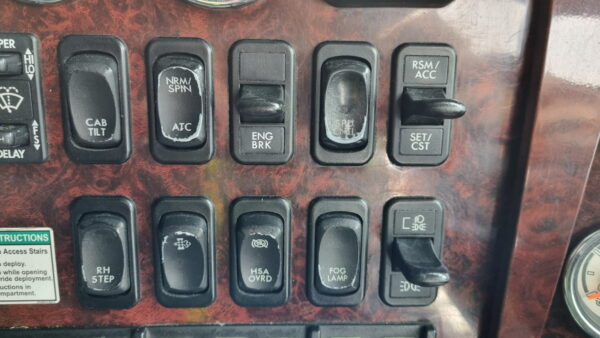What are engine brakes on a lorry?
While light vehicles like cars and vans use foot brakes (also called service brakes), the service brakes on HGVs are not powerful enough to maintain a specific speed and stop the vehicle from running away on a long downhill. Lorries can get into serious problems with brake fade, therefore engine brakes are fitted to enable the driver to slow down the truck without even touching the service brakes (in fact, in normal driving, the service brakes are only usually used to bring the truck to a stop).
Engine brakes are often called jake brakes or Jacobs brakes after the Jacobs brand which originally manufactured them. However, it’s more accurate to call them compression release brakes to avoid confusion between engine braking and engine brakes. Engine braking is the braking you get in a petrol-powered vehicle when you take your foot off the accelerator. In a diesel-powered vehicle, you don’t get engine braking due to the lack of throttle body. However, there are three systems that can be used: exhaust brakes, engine brakes (compression release brakes) and retarders. This article deals with engine brakes.
The braking system is controlled by either a switch on the dashboard (common on American trucks and older trucks), or a wand on the steering column (most common on Euro trucks). The driver can usually adjust how much braking is applied. The mechanical process is that more cylinders are opened, giving several levels of braking (some manufacturers claim up to around 300kW of braking power).


The engine brakes function when the lorry is in gear, and the clutch and accelerator are not pressed. They open exhaust valves to the cylinders just before the compression stroke ends. This releases the trapped, compressed gas.
Engine brakes will increase the life of the service brake because the truck doesn’t need to use friction from brake pads or drums to slow down.
It’s marginally less tiring for the driver who would usually have to modulate the brake pedal to slow down
It reduces the risk of brake fade because the service brakes are not used as frequently, or as strongly.
However, these brakes are noisy and not at all popular with residents who live in areas where engine brakes are used frequently.
- Understanding the National Standards for Riding Mopeds and Motorcycles
- Livestock Transport Rules UK: A Complete Guide to Animal Transportation Requirements
- The Role of Safety Advisers in Dangerous Goods Transport
- Sustainable Driving: Reducing Your Environmental Impact on the Road
- Developing Effective Lesson Plans for Driver Training
- UK Agricultural Vehicle Registration and Tax Relief
- Challenges of Transporting Radioactive Materials (Class 7)
- Exemptions and support for Clean Air Zone charges
- Navigating Legal Requirements: The UK Motorcycle Licensing Rules
- Safe Transportation of Agricultural Chemicals and Hazardous Materials
- Innovations in Vehicle Construction for ADR Compliance
- Motorcycle Recovery Operations: How to Recovery a Broken Down Motorbike
- Alternative Fuels in Agricultural Vehicles
- Carriage of Dangerous Solids in Bulk Containers
- Understanding Limited Quantity Exemptions in ADR